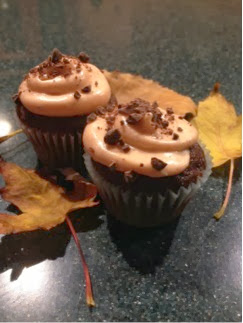Rachel Wallace

It all starts with a brownish-purple, foot-long pod filled with seeds that on their own taste a lot like raw potatoes. Somehow, despite the unappetizing appearance and inedibility of the beans, there is evidence showing that the Olmec people of South America were growing cocoa beans as early as 1500 BC. Archeological evidence also indicates that people in Honduras would ferment the pulp into an alcoholic beverage. These early chocoholics knew a thing or two because today, the cocoa bean has to be fermented in order for the beans to taste remotely like the chocolate we all know and love. Later, the cocoa bean eventually reached the Aztecs and Mayans who believed this odd little bean contained magical powers. Cocoa beans were used as currency (100 beans=1 turkey hen or 100 tamales) and made into a bitter drink for festivals. Chocolate was also given to human sacrifices to cheer them up before their death. Eventually with the arrival of Spaniards in South America, the cocoa bean made its way to Europe where it was a drink exclusively for the rich. It was during this time, in the 16th century, when people began to mix in sugar or honey to sweeten the otherwise bitter cocoa. This hot cocoa, however, was quite different than modern chocolate. All the oily cocoa butter in the bean did not mix with the water so instead of being creamy, the first hot cocoa was gritty and had an oily residue on the surface. As delicious as that sounds, I don’t see Starbuck’s adding this to their menu anytime soon!
The next big development for chocolate came in 1828 when a Dutch chemist named Conrad Van Houten figured out a way to squeeze the oily cocoa butter out of chocolate liquor. The powder that he created is the same as modern cocoa powder. He also realized that if he added alkali substances, like baking soda, to this powder, it would more easily dissolve in water and smooth – creamy hot cocoa was born.
Once cocoa powder was created, the modern chocolate bar was not far behind. In 1847 the chocolate bar was created when Joseph Fry (a true genius) added some of the cocoa butter back into the cocoa powder to create a moldable paste and voila! Milk chocolate soon followed when Daniel Peter and Henri Nestle of Switzerland added milk powder to the chocolate bars. Now, there was no stopping the spread of these delicious new treats. Companies such as Cadbury, Nestle and Lindt formed and spread throughout Europe and America, paving the way for other chocolate companies that allow us to enjoy this food of the gods whenever we want!
Want to better understand the original chocolate treat? Here is a recipe for a form of the original Aztec hot chocolate or Xocolatl!

















